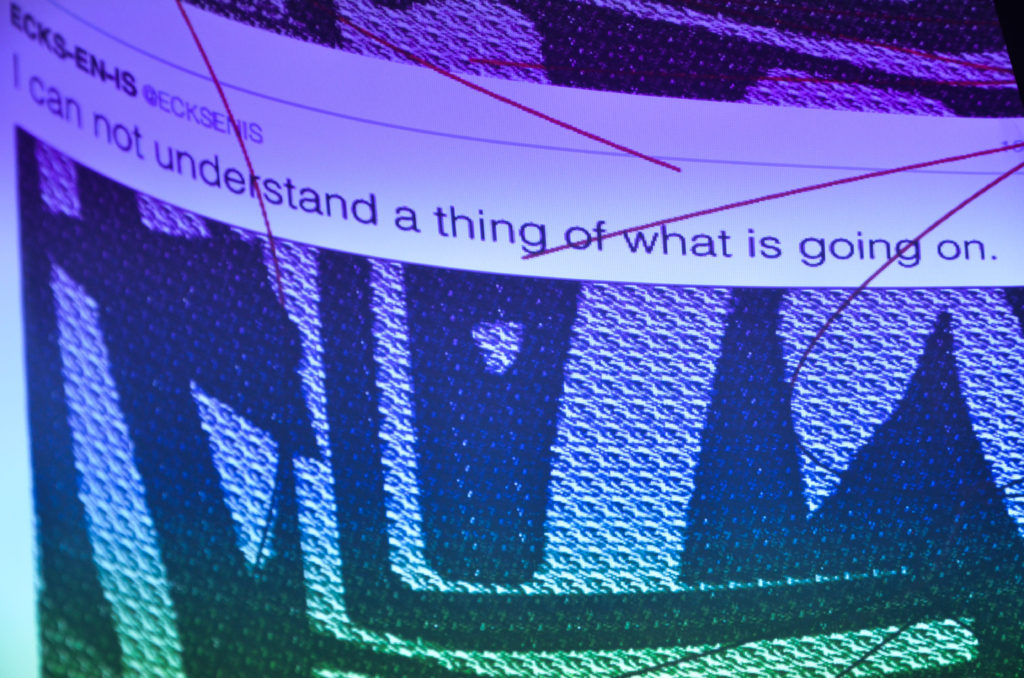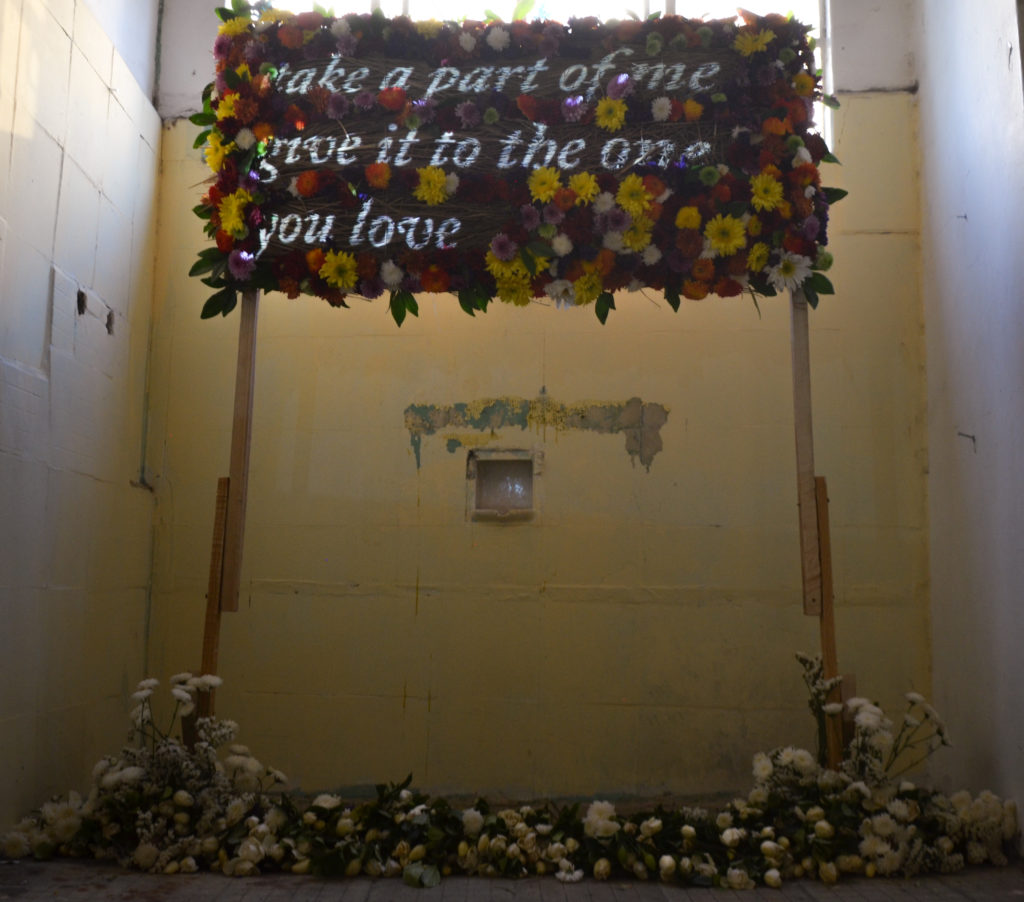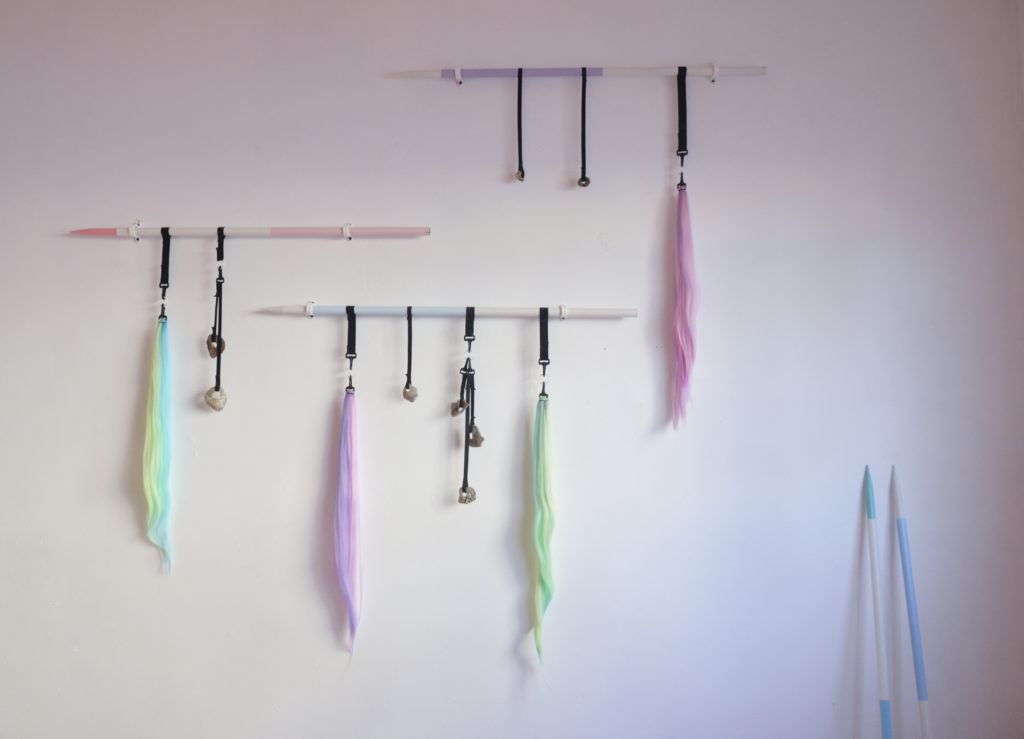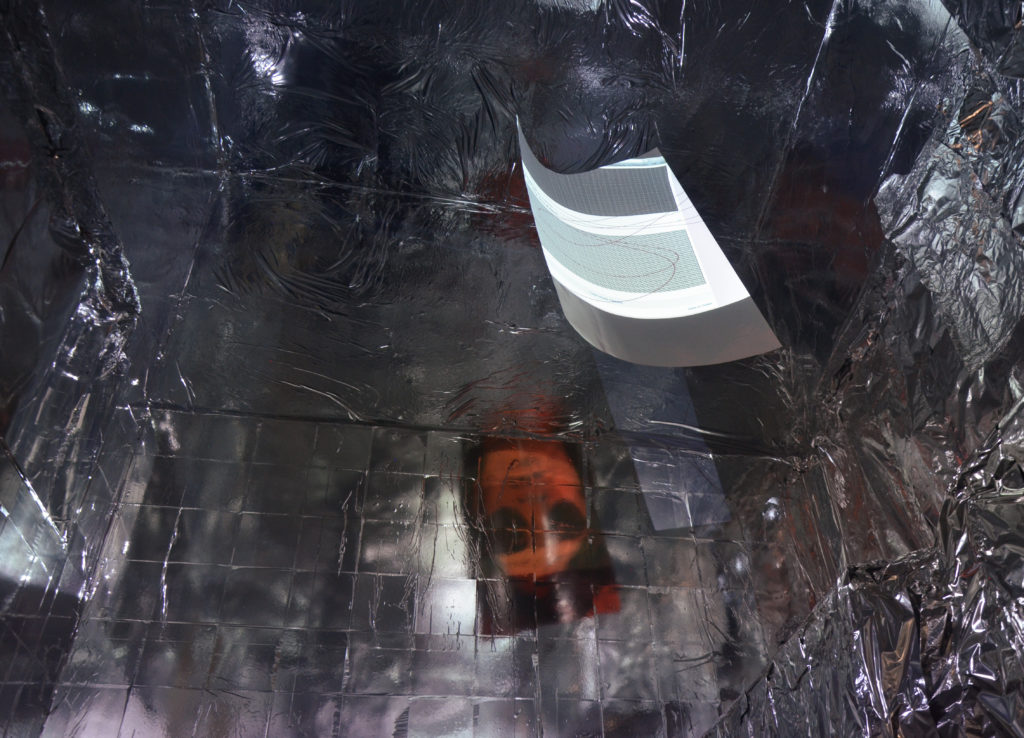Mexico City’s LADRÓNgalería’s Facebook immediately evokes a weird gag site, or meme page. From the neon-green flourescent cover photo to the seemingly arbitrary, often diminutive, yet frequently updated profile pics, the account is unrestrained by any content-specificity, captioned mainly in hashtags and filled with a collection of random posts about happenings, artworks and things unrelated to the programme. “Of course we love getting likes,” says co-founder Marek Wolfryd about their Facebook page, “but we don’t really have any opinion about our social media. It is really just what it is, made for the public to comment, like and share.” Clearly, there’s something going on with LADRÓN’s non-strategic social media détournement. In the most uncalculated of ways, Facebook, like its IRL operations exists as a space for experimentation, indeterminacy and collaboration.

LADRÓN is an alternative space based in the automotive district, founded in 2015 by Mexico City-based artists Wolfryd and Marco Aviña, now co-run with artist Wendy Cabrera Rubio. Alternative is the key word here, not to be confused with independent, which suggests a complete break with the more serious, neoliberal and institutional models intrinsic to the museum or gallery settings. In being defined as alternative, there’s an alignment to the global art world and division from traditional financial backing, which is more conducive to a self-governing agenda. And LADRÓN definitely self-governs, giving almost a courageous amount of faith and freedom to its collaborators.
There is one major catch to this unadulterated autonomy — a ‘big tradition’ upheld since the space’s inception — pairing two groups together for involuntary collaboration. These pairings appear the only form of curatorial authority upheld by the gallerists; they select the people who exhibit together, and hope some artistic magic will occur between them. The mated artists, collectives, and/ or groups divide the space, whether equally or not, to work towards an install with the same opening date.
While LADRÓN provides visibility to underrepresented artists in a similar fashion to a museum, gallery and/or non-profit art organisation, it also fosters more creative models of living, working and creating, allowing artists to “do everything from the heart and gut (really).” Wolfryd jokes that LADRÓN media is a practice of ‘symbolic de-growth.’ At least in terms of outreach and branding, it takes on a more nihilistic identity on URL, with its social media profile sometimes appropriating a more subjective conservative ideology (for example, aligning itself with entrepreneurial culture), as an act of satirical rebellion. Yet the content of the exhibitions and subject matter circulated by the artists is completely serious IRL. The identity unintentionally assumed by, or purposefully unassumed by, LADRÓN is both ‘low-brow’ and ‘high-brow,’ paradoxical and contradictory, all at the same time.
Following the Mientras desaparezca / As Long As It Disappears group exhibition, which I co-curated with Helena Lugo and John Kenneth Paranada (aside from illustrator collective Zúngale) in April, I spoke with Wolfryd over Google Doc and then Facebook chat, to help better understand the skeletal backbone of LADRÓN as a space for innovation.

**In reality, you all are the most critical of ‘promoters’ (for lack of a better term), even though, perhaps, your structure doesn’t necessarily reflect that. By this I mean, the choice of pairing artists together seems weirdly limiting, especially considering how much autonomy you offer in other ways, even though I understand you’re all about nurturing unexpected collaborations…
Marek Wolfryd: Well I think limitation only comes with perspective. Everyone creates their own perception of their own limitations amongst specific circumstances. Maybe this somewhat has to do with our background, on a social basis, when you’re brought up with limitation as your main quality, you end up learning how to shift shit around… This is one of the main attributes in Mexican art history, also entrenched in dealing with everyday reality in the present context. So where you might find restriction, we see opportunity. In the first building we had, the architecture presented us with two parallel rooms. So it just came to us, what about pairing people and seeing what happens… and we kept it.
**So LADRÓN is all about freedom, except for this one “thing?”
MW: Again, freedom in this case is relative to perspective.
**Wait, this needs unpacking. Do the pairings actually work and collaborate together, or not really?

MW: Depends on every show. We never ask for it. What we always try to create is an atmosphere (when logistics make it possible), so we usually meetup with both artists (or projects) and talk about their ideas before the show, what they need and think, let the conversation take on a life of its own. If things develop organically, people collaborate or structure things with the same direction in mind, but sometimes they don’t and just work on their own. We’ve never had a bad experience with this only positive thoughts and neutrality.
**On a more serious note, how has safety and precarity (both physically and financially) in moving outside of the city center, decentralizing, if you will, factor into the working structure of LADRÓN?
MW: Well… the most positive effect would be to our (and our benefactors) wallets, the reduction of operation costs reduces dramatically when you leave the trendy neighbourhoods and move to more “accessible” working class areas (although we’ve never been in the trendy, upscale neighbourhoods). I think this is a strategy most artists execute at some point in their careers, being one of the largest self-oppressed/unpaid workforces in the world makes us very skilled in finding ways to live better with less. Of course there is also the idea of decentralizing the geographic qualities of bourgeois, high-end contemporary art world, which is a very paradoxical situation. On one hand we’re fighting against certain standards imposed by an “establishment” which make contemporary art almost completely inaccessible to the majority of the population; financially, intellectually and socially.

On the other hand, we could be turning things around for worst. “Art washing” is nothing new, yet in Mexico City this topic has been discussed very little. Gentrification is a big part of the capitalist development project that the city council has been strongly imposing over the past decade. This is an urban issue that puts everyone and everything in real danger, the government in collusion with real state enterprise and mass media are well known to be behind this. Unfortunately I think artists are involuntarily (most of them) a big part of this problem, which in fact makes us accomplices in the issue. We as a community need to become critical towards the instrumentalization of culture in profiting real estate speculation.
**Everything about LADRÓN seems to be a paradox…
MW: Not only LADRÓN… This subject has been widely discussed in the past, with impressive arguments on both sides. For better or worse we are contemporary artists and that’s what we like to do, so we don’t have any other choice rather than playing within the existing structure of contemporary art. However, because of our social background we basically and intrinsically resent bourgeois culture, but also as artists we choose not to identify with any kind of counter cultural political avant garde. So what to identify with???
**So LADRÓN is this middle ground between the polarities of ‘high’ and ‘low’ culture?
MW: I wouldn’t call it middle… It’s been described by some as opaque, a hybrid trying to find a place to be. I like that description better because it allows for a certain level of identity experimentation. Personally, socially, politically and aesthetically we don’t identify — but are complied to thrive in — with the system, as artists and as people! So basically for us it’s about trying to find a place to be and a place to stand, in the hopes of creating some sort of nurtured interaction with the world.

**You may not identify with any existing structure, but that doesn’t mean LADRÓN doesn’t structure or align itself with some sort of identity. That might be poetry. As a collaborative art project, then, why even have a space? Why is it so important?
MW: Could be poetry, could be a means of laying out oppression, choose the one you feel closer to your heart and go with it. We think physical space is a kinder — to our time — ways of exhibiting art, and producing exhibitions for others is half the project. Having a building to constantly put artwork in just makes everything easier for everyone involved.
**Why is LADRÓN different from other alternative spaces in Mexico City?
MW: Well, we produce everything out of instinct. We really don´t care much for tactics that could lead us to distinguish ourselves from others. So I never assume we stand out of the bunch, we only like to do the things we feel are right… as artists we experience the construction of our space through visuality and symbolic language rather than a theoretical basis. At the very least I think this is achieved, and in that agenda, some people have identified themselves with our way of working, and the essence that has created. We hope to make people happy and refresh our perception of the panorama. I believe that is a very good motive.

**How do you envisage LADRÓN’s survival?
MW: There are many ways in which we can define strategies to stop or at least create a conscience towards the issues at hand. The most important one at the moment for us is (as I mentioned before) the instrumentalization of culture in pro of the neoliberal agenda wrecking the country. For one, to be critical towards gentrification we need to be more engaged with the local communities, be aware of the neighborhood problematics and find our own ways to address them. As a forum of public discussion we could, very much, use our visibility to promote local business, clear mass-media defamation, ask local authorities to properly address services amongst others; most importantly, respect and understand the community’s ways of organization, customs and traditions; and not become foreigners blindly subsisting off the cheap rent whilst attracting attention of private interests. More than ever we need to be conscious of the way we’re fabricating “alternative’ cultural production.
I wish I knew other ways to become sustainable, without pursuing grants or private patronage or aligning with market or business models (like selling beer during shows). Being sustainable, by any of these strategies, doesn’t mean you’re less ‘alternative’ than before. However, I do think we need to find more creative ways of being experimentally sustainable, this could help us gain freedom without losing autonomy or being molded by someone else’s agenda… theorising about it is fine but cracking the enigma is the hard and ultimate survival achievement.**














